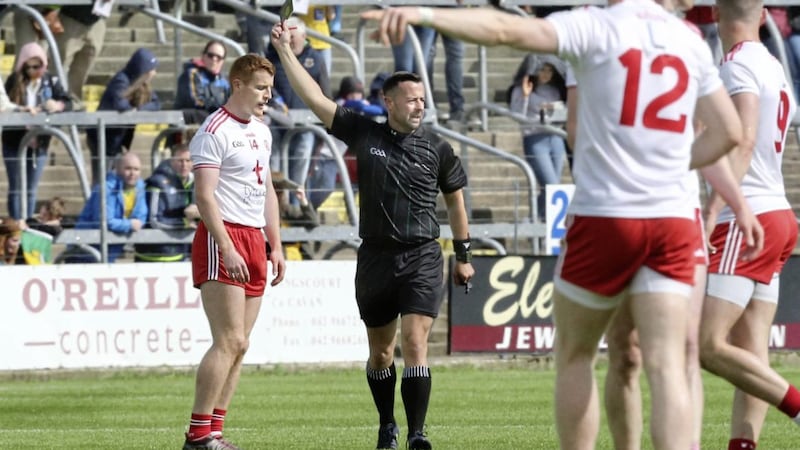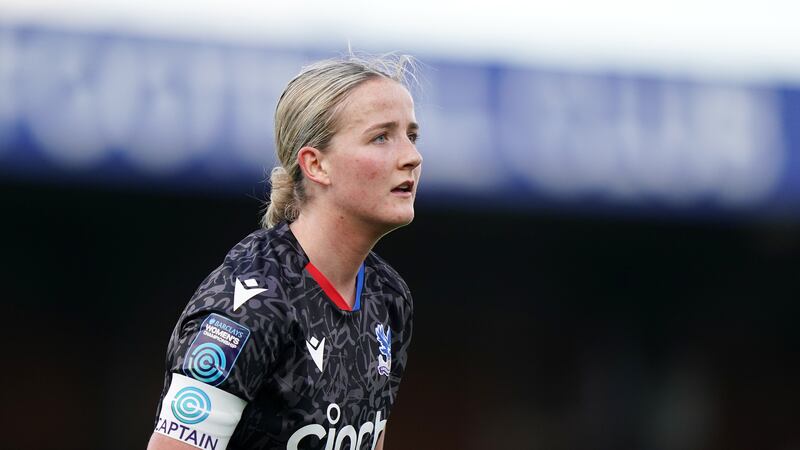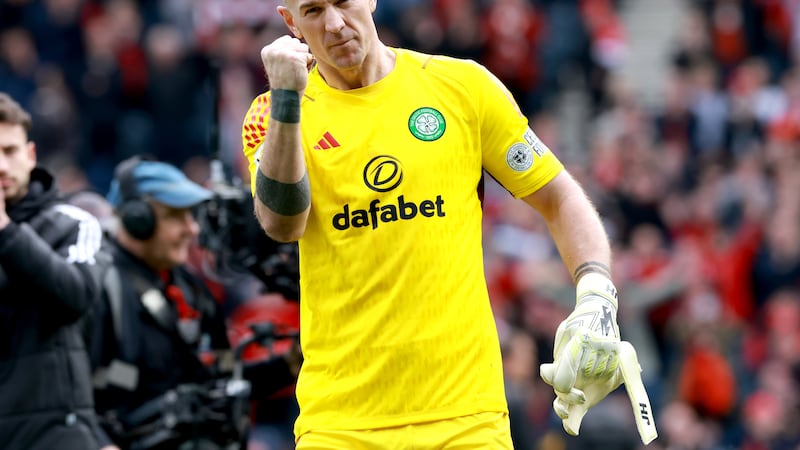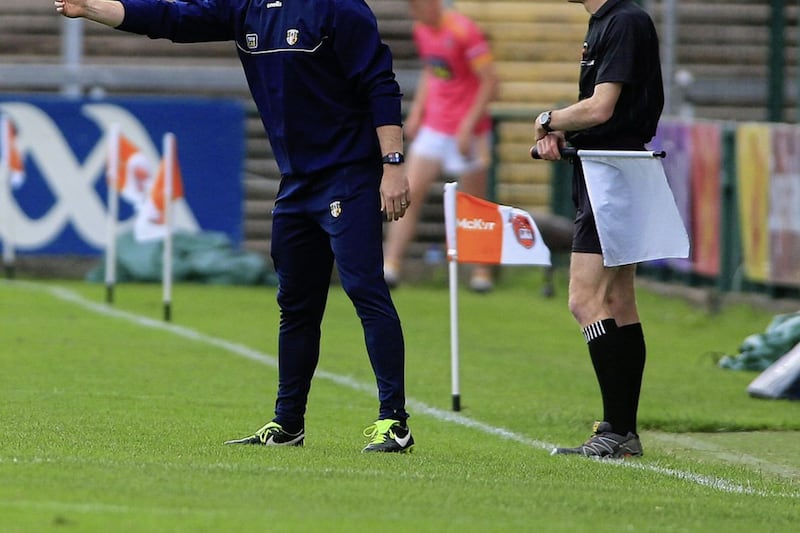WE have been spoilt with the football served up in this year’s Championship, but a couple of issues have managed to creep onto the radar of spectators.
Like an annoying fly on the TV screen, they may be there but go unnoticed, so you carry on your viewing pleasure uninterrupted.
When they catch your eye, however, they become so irksome that the enjoyment of the previously enthralling show becomes almost impossible due to the small, yet persistent, irritation.
In this summer of high quality football, two particular flies have appeared on the screen.
One is the perennial annoyance – the black card. The other is a newly discovered species – ‘head injury-itis’, which appears quite contagious given its rate of spread.
The problem with the black card isn’t the things it is trying to stamp out but its interpretation by referees and the degree of the punishment handed out.
I think we can all agree that someone punished who commits a blatant foul without any realistic attempt to carry out a legal tackle – particularly where it would fulfil the ‘professional’ criteria in soccer – deserves punishment.
However, because of how black-card offences are so specifically defined – it has to be a ‘pull down’ to qualify, thereby meaning any other sort of pull back, no matter how blatant, doesn’t qualify – means that many overt, cynical fouls actually go unpunished.
The other problem is that some fairly innocuous fouls end up receiving a punishment one step down from a red card, with the offender ordered from the pitch.
This can be in a game when many serious, ‘dirty’, personal fouls receive the lesser yellow card sanction.
Essentially the punishment of the black card too often does not fit the crime.
Even at the other end of the scale, in the classic black-card tackle of rugby-tackling someone straight through on goal, the punishment seems lenient.
The Peter Harte debacle has brought it into sharp focus.
There can be a debate over whether he committed trips against Donegal and Cavan and how intentional they were, but I doubt if anyone would seriously argue that Harte being ordered off the pitch at senior Championship level was an appropriate sanction for those fouls.
Maintaining hard, physical football is important and some of the black-card calls this summer are starting to make players more and more reluctant to go into contact.
The flip side is that we also see new ‘safer’ ways to foul or impede an opponent emerging, like the standing rugby arm wrap, or the two-handed push back of the runner.
Either way, the evidence continues to mount that the black card is not functioning as it is supposed to and either needs to be seriously re-examined or done away with completely.
On a related topic, there have been some murmurings regarding whether Peter Harte should take a black card on purpose in the closing stages of the Cork game IF Tyrone find themselves in a winning position.
The scenario to avoid is Harte missing an All-Ireland semi-final.. should Tyrone get there.
In fairness, simply sitting out the Dublin game would also secure the same outcome without the hassle of a suspension as the black card suspension rule does not apply to an All-Ireland final anyway.
The second fly on the screen is another example of a good idea in principle being manipulated.
I speak of the apparent outbreak of head injuries in this year’s Championship.
Head injuries are an emotive topic and the attention on concussion has to be welcomed by all with a serious interest in our players’ welfare.
The directive that the game should only be stopped for head injuries was intended to speed up the play and prevent unnecessary stoppages or breaks in play occurring for less serious injuries.
As teams become ever-more artistic in their definition of game management or their ability to ‘close out a game’, this rule has led to some Oscar-worthy play-acting that does not reflect well on our game.
As someone in the field, the tricky business of determining the validity of a reported injury is a minefield.
One always has to take things at face-value and trust the party who says they are injured. The referee is in this position too.
The chorus of ‘head injury ref!’ that rings out urgently to get the referee’s attention is often followed by a very relaxed reaction once the game is stopped.
It’s almost as if neither the crowd nor the players and management, who were so earnestly calling attention to the head injury moments earlier, are actually that concerned that a serious injury, necessitating the immediate halt to the game has actually occurred.
Slow motion replays of key tackles in big games would make me question my knowledge of anatomy and biomechanics when, following contact large or small to disparate parts of the body, players grab their head.
I am in no doubt that only a minority of head injury stoppages in recent games are legitimate. The rest are basic gamesmanship. This plague represents a number of issues.
Firstly, given the age-old story of the boy who cried wolf, any suggestion of head injuries continue to deserve immediate attention. Thus, a referee has no choice but to assume the injury is genuine.
The solution is to introduce a concussion sub.
This is a controversial topic as many doctors within the game support its introduction but the Medical, Scientific and Welfare committee of Croke Park has decided to continue with its policy of ‘if in doubt, sit them out’, where all suspected concussions are removed and not allowed back on, therefore no concussion sub.
While there is technical debate behind the merits of concussion subs and the value of head injury assessments, the current rate of stoppages may force the hand of the rule-makers.
A concussion sub could be used for any incident when play is stopped for a suspected head injury, with the player in question having to leave the field for a mandatory 10-minute period to allow formal assessment to occur.
I would have a strong suspicion that the rate of head injury related stoppages would dramatically decrease.
Undoubtedly, while we all give out about the rule-makers’ inability to somehow cure all the ills of the game, in every team there is the classic Irish approach of trying to find whatever little inch or loophole that may benefit the team at any given moment.
Claims to the moral high ground fall on deaf ears as the suspicion that our neighbours or rivals would be up to at least the same is always there.
I suspect the game of cat and mouse between the rule-makers and the players and managers will continue for some time yet.








